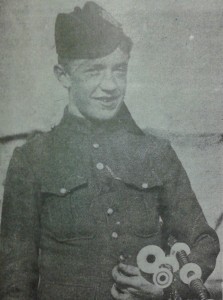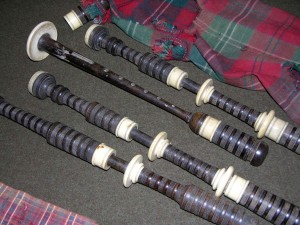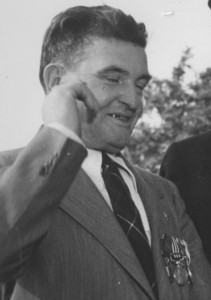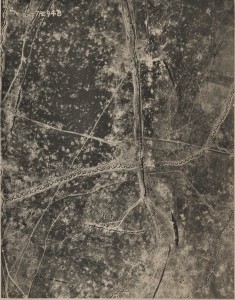Gallantry on the Somme: The 16th at Regina Trench
The 16th Battalion C.E.F. (The Canadian Scottish)
Regina Trench Awards
The Victoria Cross for Valour

Piper James Cleland Richardson VC. The award of the Richardson VC was not announced until October 1918.
28930 Private (Piper) James Cleland Richardson
Died of wounds August 9, 1916.
Buried at Adanac Military Cemetery, Miraumont, Somme, France.
For most conspicuous bravery and devotion to duty when, prior to attack, he obtained permission from his Commanding Officer to play his company ‘over the top.’
As the company approached the objective, it was held up by very strong wire and came under intense fire, which caused heavy casualties and demoralised the formation for the moment. Realising the situation, Piper Richardson strode up and down outside the wire, playing his pipes with the greatest coolness. The effect was instantaneous. Inspired by his splendid example, the company rushed the wire with such fury and determination that the obstacle was overcome and the position captured.
Later, after participating in bombing operations, he was detailed to take back a wounded comrade and prisoners.
After proceeding about 200 yards Piper Richardson remembered that he had left his pipes behind. Although strongly urged not to do so, he insisted on returning to recover his pipes. He has never been seen since, and death has been presumed accordingly owing to lapse of time.

The pipes belonging to James Cleland Richardson VC, now exhibited in the rotunda of the B.C. Legislature, Victoria. (P. Ferguson image.)
Regina Trench Awards
The Military Medal for Bravery in the Field
77374 Lance Sergeant Joseph Eli Goulding
Killed in action 8/9 October 1916.
Buried at Adanac Military Cemetery, Miraumont, Somme, France
In the assault on Oct; 8th 1916, he was badly wounded during the charge. Notwithstanding this he kept on with his company and entered the trench remaining there in command of his platoon for seven hours, until finally compelled to leave in a weakened condition by the effects of his wounds.
He has had a long and faithful career in the field.
77140 Lance Corporal Alfred Howard Hastings
Killed in action 2 September 1918.
Buried at Dominion Cemetery, Hendecourt-les-Cagnicourt, Pas de Calais, France
Hastings was later awarded a bar to the Military Medal for his actions at Hill 70.
During the action of Oct; 8th-9th, 1916, L/Cpl Hastings displayed gallantry and devotion to duty while acting as a Signaller [sic] and Messenger. He twice traversed the heavy artillery barrage carrying messages to the front line. On one of these occasions he led a party carrying bombs which were urgently needed.
By his coolness and resource in leading his party from shell hole to shell hole he succeeded in getting them and the bombs to the front line in spite of heavy shell and rifle fire . He assisted in keeping the telephone lines in repair and made several trips over the line at great hazard to himself.
During the eighteen months this N.C.O. has been in the field he has been noted for his devotion to duty.
A/20816 Sergeant William Black MacKissock
Died of wounds April 9, 1916
Buried at Ecoivres Military Cemetery, Mont-St. Eloi, France
During the action of Oct; 8th, 1916, his Company being scattered and broken, he rallied the remnants and again led them forward to the assault, and after encountering the wire, entered the trench dispersing the enemy. But for his timely action this part of the trench would not have been in our hands.
In the retirement which became necessary some hours later, he drew of his men in a masterly manner. He has always been a keen and resourceful soldier.
29246 Corporal James Clark McNeil
For conspicuous gallantry and ability on Oct; 8th, 1916, when after all his officers had been killed in the attack he organized his men and directed fire on the enemy. Later on the same day he volunteered to carry a message back to Battalion Hdeqrs [Headquarters], through a very heavy artillery barrage.
After delivering it he was severely wounded on his return journey to the front line.

William Henry Metcalf VC, MM and Bar was awarded his first gallantry award, the Military Medal, for bravery at Regina Trench.
22614 Lance Corporal William Henry Metcalf
Metcalf was awarded a Bar to the Military Medal for his actions at Amiens, France and the Victoria Cross for his actions at Drocourt-Quéant Line near Arras, France.
For conspicuous gallantry and devotion to duty near Courcelette on the 7th, 8th, and 9th of October, 1916. On the night of October 7th, word was brought to Battalion Hdeqrs [Headquarters], that a man was lying in a trench some distance away, bleeding to death, this N.C.O. a Signaller [sic] volunteered to go and bind up his wound which he did although the trench was under terrific shell fire and he was in great peril. During the next two days he repeatedly went over the heavily shelled area and repaired broken telephone wires, thus keeping up communication with Brigade, which was of immense value to the situation. During twenty months service in the field his conduct has been one of uniform bravery and cheerful devotion to duty.
420537 Lance Corporal William James Moroney
In the capture of Regina Trench near Courcelette on October 8th, 1916, he was in charge of the battalion Machine Guns. He acted with the greatest coolness, resourcefulness and courage. The left flank becoming exposed through another Battalion being checked, he took a machine gun the whole crew had become casualties, and taking up a position alone in a shell-hole on the flank, kept back several attacking parties of the enemy. When his ammunition was exhausted he carried his gun back safely to the support trench where he set it up and stayed on duty until relieved the following night.
147320 Private Frederick Maitland Watts
During the action on October 8th, 1916 against Regina Trench near Courcelette, after all he [the] rest of the crews had become casualties he held a position on the left flank (which was unprotected) with his Lewis gun, and kept up a heavy fire on the enemy, procuring ammunition from his comrades and from casualties.
When the line was forced to retire he covered the retreat with his gun, and finally brought it out safely under a heavy fire.
Other Awards
No awards of the Distinguished Service Order, Military Cross or Distinguished Conduct Medal have been specifically traced for actions at Regina Trench by soldiers of the 16th Battalion CEF. These awards will no doubt reveal themselves with further research. Citations for these awards do not contain data as to where they were awarded. Once research has been completed they will be added to this article.


Comments